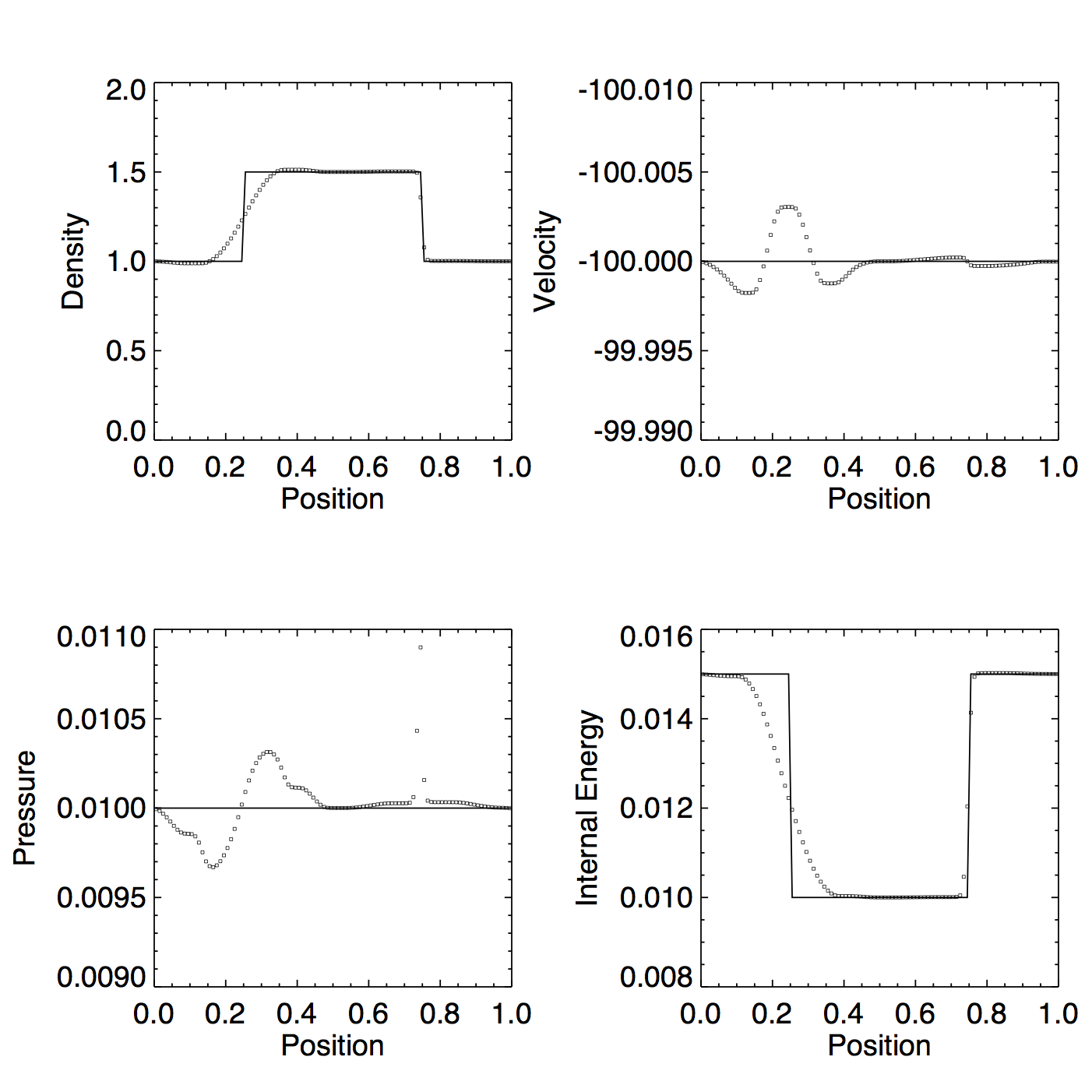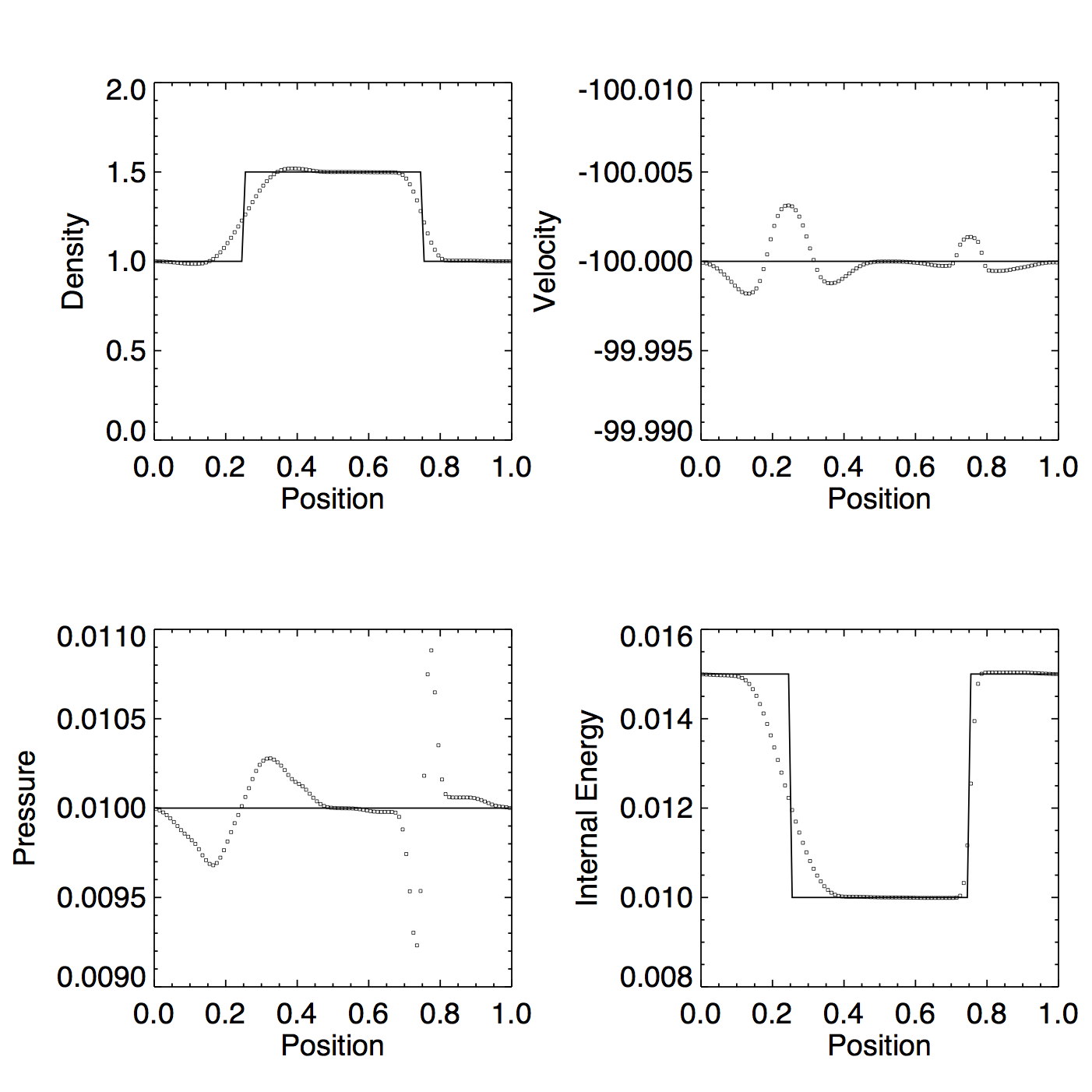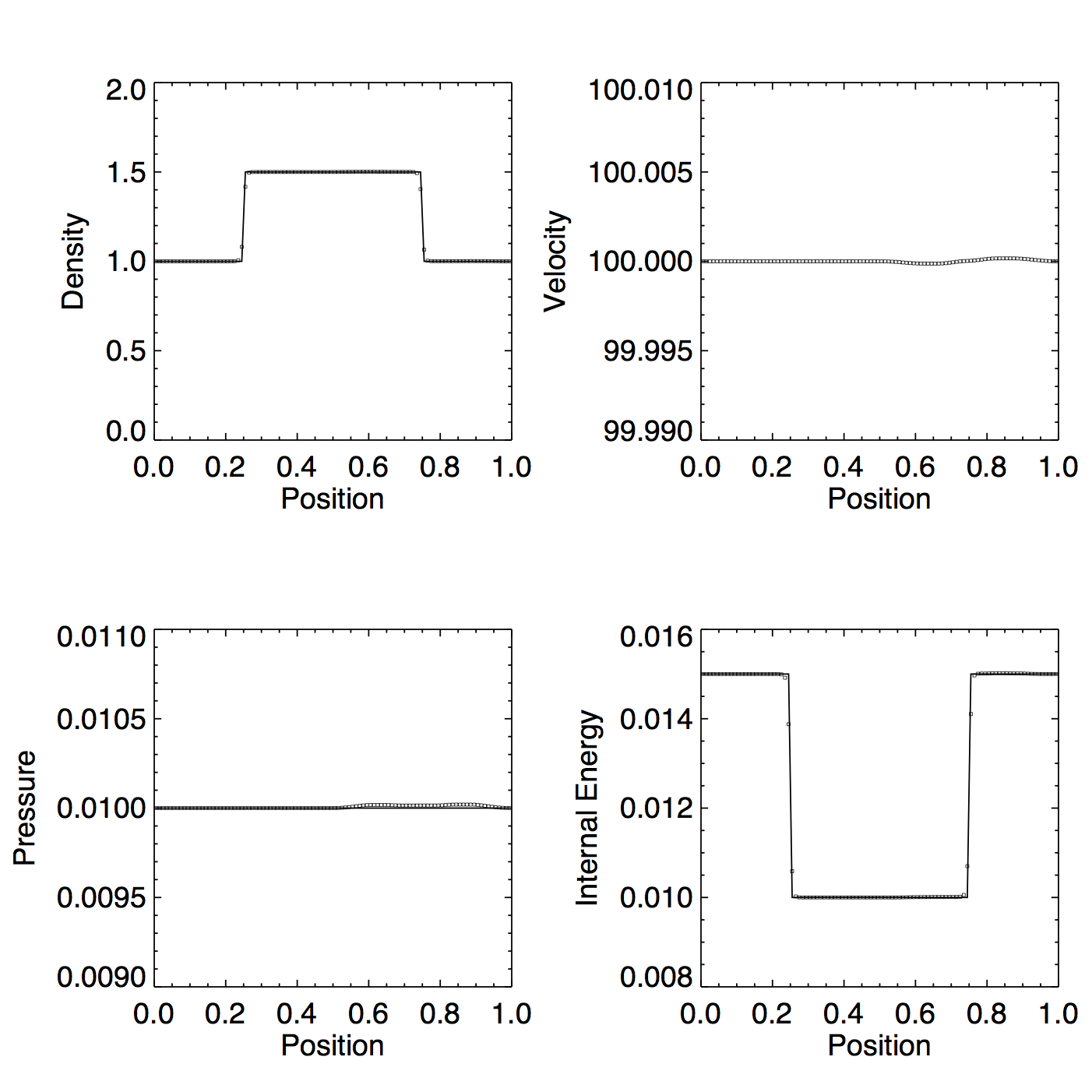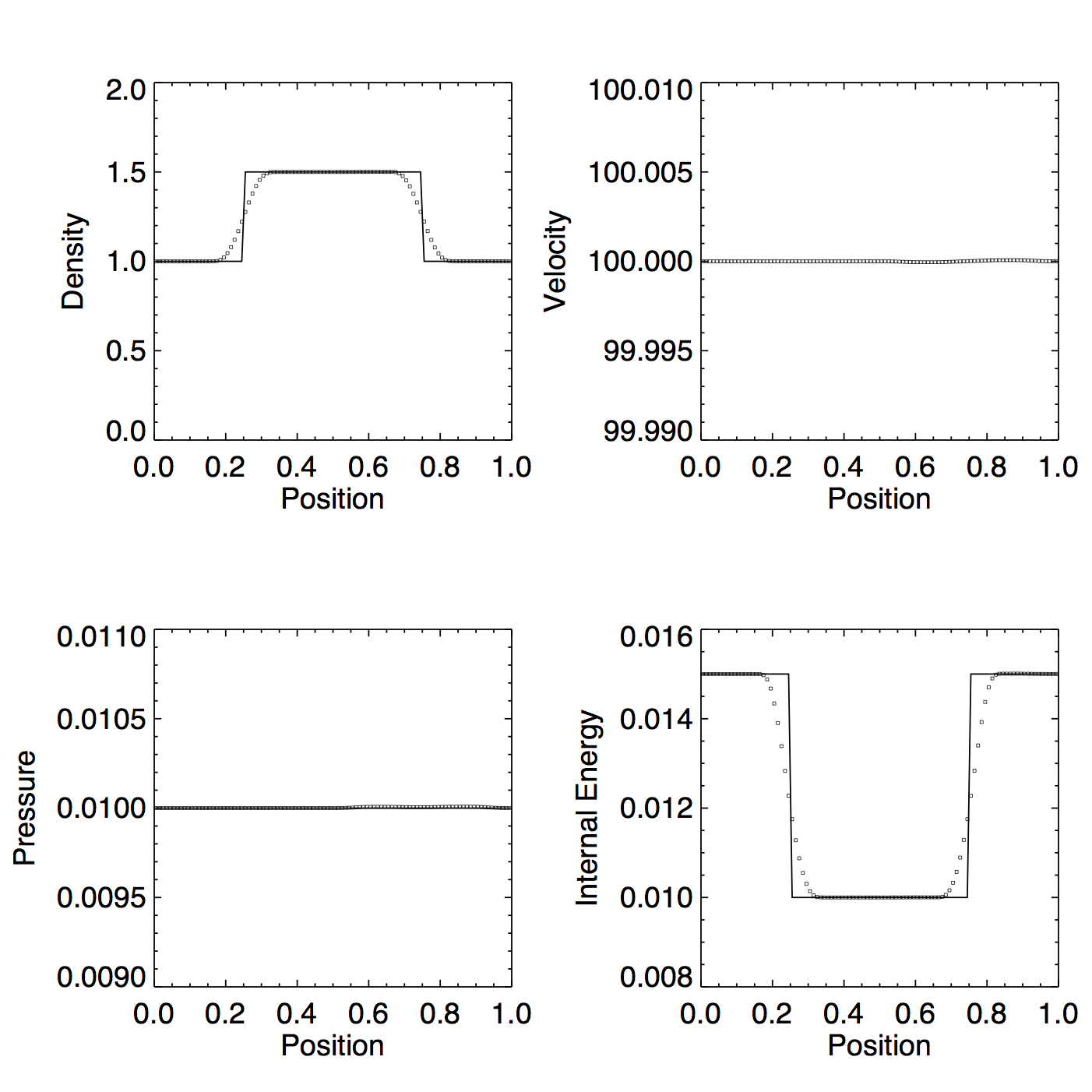PPM tests
October 7, 2015
After the last post, I discovered a couple of bugs in the reconstruction techniques that were leading to very poor internal energy solutions on the square wave test. The results have improved considerably, but there is still some assymmetry, which is especially pronounced when using third order reconstruction (PPMP or PPMC). This post investigates the assymetries in the high mach number square wave test.
First of all, is the assymetry caused by another bug? To test this, I run the same tests, but with the velocity reversed.
Figure 1a: PPMP, exact solver, dual energy

Figure 1b: PPMP, exact solver, dual energy, reversed velocity

Figure 2a: PPMC, exact solver, dual energy

Figure 2b: PPMC, exact solver, dual energy, reversed velocity

The behavior is very similar for the reversed tests, but clearly not identical. In particular, the pressure in the PPMP tests is underestimated in one direction but not the other.
Instead of using the advected internal energy to calculate the flux (\(F(e) = \bar{\rho}\bar{v}\bar{e}\), with \(\bar{e} = e_{L}\) if \(\bar{v} > 0\), \(\bar{e} = e_{R}\) if \(\bar{v} < 0\)), what happens if I use the sampled pressure (\(F(e) = \bar{p}\bar{v} / (\gamma - 1)\))?
Figure 3a: PPMP, exact solver, dual energy, sampled e

Figure 3b: PPMc, exact solver, dual energy, sampled e

This certainly helps, but I’m not sure it would work in a scenario where dual energy is actually needed.